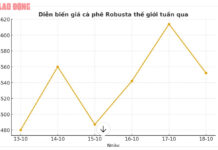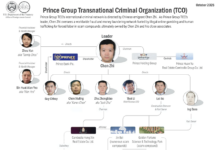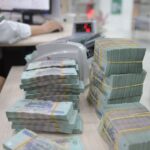
The State Bank of Vietnam (SBV) recently responded to voters in Tra Vinh regarding their request for measures to enhance the value of the Vietnamese dong.
According to the SBV, they have been closely following the National Assembly and Government’s guidelines and directives, persistently pursuing the goal of curbing inflation and stabilizing the macro-economy as the top priority in managing macroeconomic policies, particularly monetary policies. A stable macroeconomic environment and controlled inflation lay the foundation for economic development and strengthen the confidence of investors, businesses, and citizens in the business landscape. This, in turn, attracts FDI, optimizes resource allocation, and ultimately enhances the long-term position and value of the Vietnamese dong.
Within this context, the SBV operates the exchange rate within the common monetary policy framework to achieve the consistent and unified goal of curbing inflation and stabilizing the macro-economy, aiming for the overall benefit of the economy.
The SBV’s orientation in managing monetary policies, including exchange rate policies, is to allow flexible exchange rate fluctuations, absorb external shocks, and limit excessive VND volatility. This approach aims to stabilize market psychology and expectations, creating a conducive environment for production, business, and international trade activities. Over time, the exchange rate has fluctuated flexibly in both upward and downward directions, aligning with market conditions, and during many periods, the VND has been more stable compared to other currencies.
Since the beginning of 2024, amidst international market pressures and domestic challenges, the SBV has flexibly managed the exchange rate, absorbing external shocks while implementing measures to support the VND.
Specifically, the SBV has issued bills to regulate the excess VND supply, helping to narrow the negative interest rate differential between the VND and USD and reducing pressure on the exchange rate.
Additionally, the authority has sold intervention foreign currencies to credit institutions to support market liquidity and meet the economy’s foreign currency demands, stabilizing market psychology and contributing to the stability of the foreign exchange market.
With these management solutions, the Vietnamese dong has depreciated in line with international trends and at a moderate rate compared to regional and global currencies.
Moving forward, the SBV will continue to closely monitor market developments to flexibly and appropriately manage the exchange rate, coordinating with other monetary policy tools (VND liquidity, interest rates, policy communication, etc.) and intervening in the market to stabilize the foreign exchange market, curb inflation, and stabilize the macro-economy.
The Art of Optimizing: Crafting a Captivating Headline
The Fed Adjusts Credit Limits: Who Benefits the Banks?
In the first half of the year, several banks achieved remarkable loan growth rates, outperforming the industry average. LPBank took the lead with an impressive 15.2% growth, followed by ACB at 12.8%, HDBank at 12.5%, Techcombank at 11.6%, MB at 10.3%, and VPBank at 10.2%. These figures showcase the resilience and dynamism of Vietnam’s banking sector, even amidst global economic uncertainties.







































